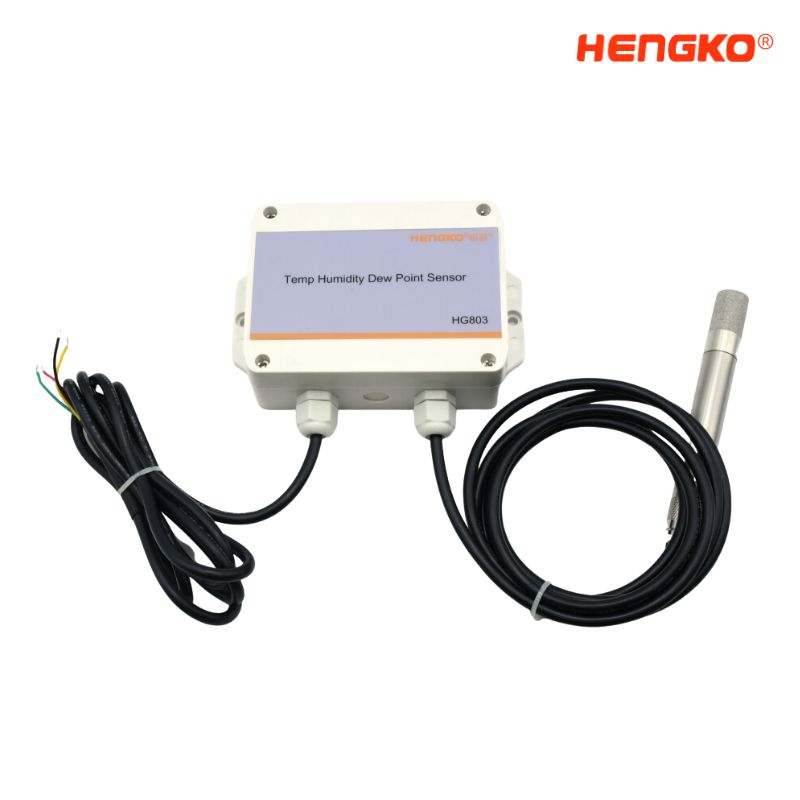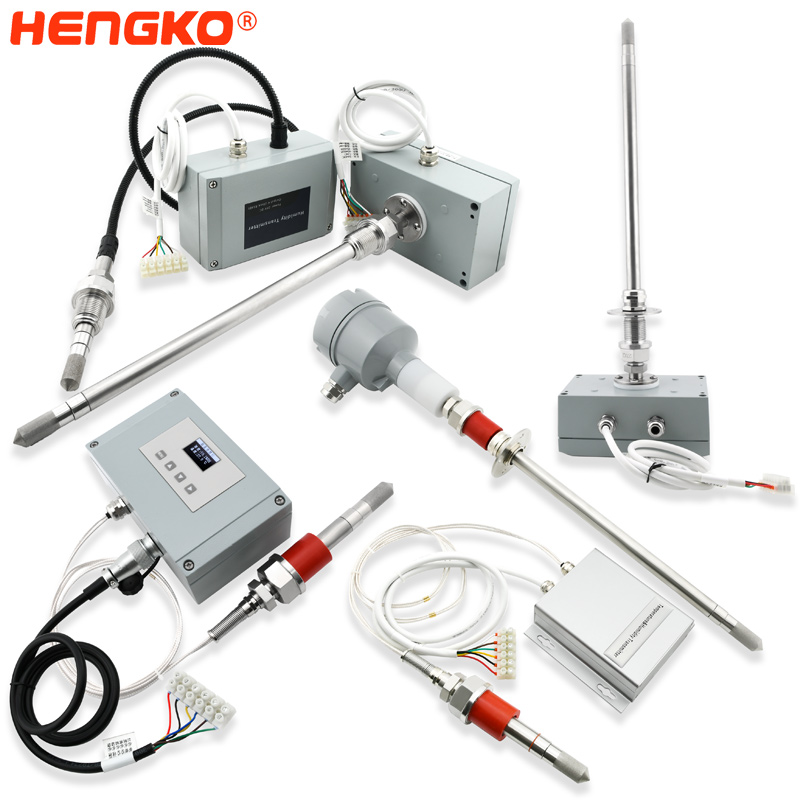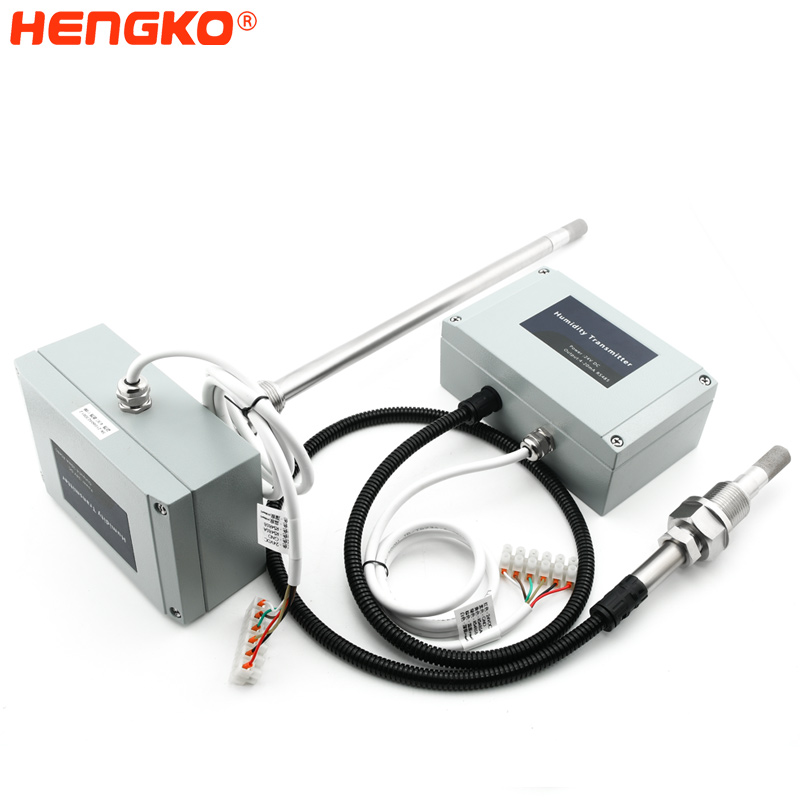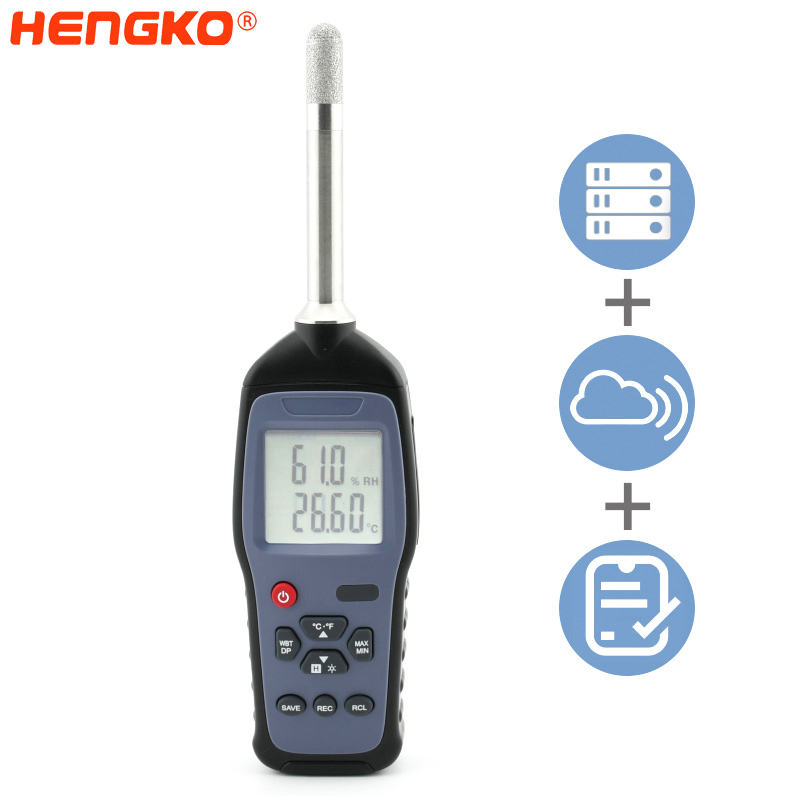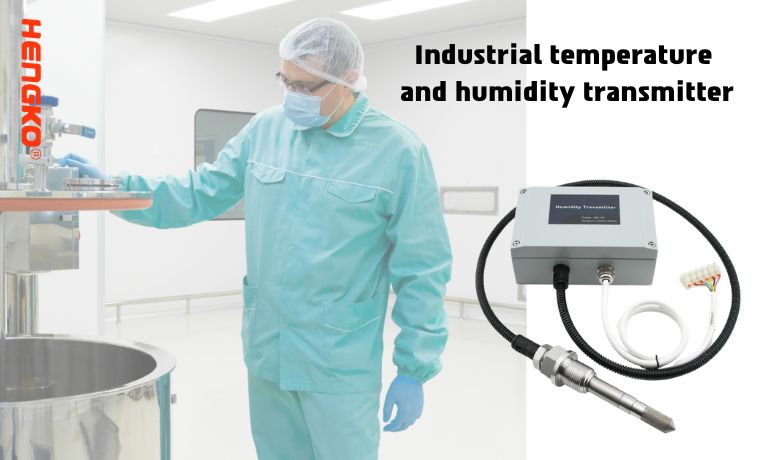
What is Industrial Temperature and Humidity Transmitter
An Industrial Temperature and Humidity Transmitter is a device used in various industrial applications to measure and transmit information about temperature and humidity conditions. Here's a more detailed breakdown:
Function:
Temperature Measurement: It measures the ambient temperature of the environment in which it is placed. It typically uses sensors like thermocouples, RTDs (Resistance Temperature Detectors), or thermistors.
Humidity Measurement: It measures the amount of moisture in the air. This is often done using capacitive, resistive, or thermal sensors.
Transmission:
Once these measurements are taken, the device then converts them into a signal which can be read by other devices or systems. This could be an analog signal (like a current or voltage) or a digital signal.
Modern transmitters often communicate with control systems via industrial communication protocols like 4-20mA, Modbus, HART, or other proprietary protocols.
Applications:
Industrial: These devices are crucial in industries where specific humidity and temperature conditions are needed, like pharmaceuticals, food processing, and chemical production.
Agriculture: They can help monitor and control conditions in greenhouses or storage facilities.
HVAC: Used in building management systems to maintain desired indoor air conditions.
Data Centers: To ensure servers and equipment are operating under optimal environmental conditions.
Features:
Accuracy: They are built to provide very accurate readings since even a small change in conditions can have significant impacts in some applications.
Durability: Designed to operate in tough industrial environments, they might be resistant to chemicals, dust, and high levels of moisture.
Remote Monitoring: Many modern transmitters can be connected to networks, allowing for remote monitoring and data logging.
Components:
Sensors: The heart of the transmitter, these detect changes in temperature and humidity.
Signal Converters: These convert the raw readings from the sensors into a format that can be easily read by other devices.
Display: Some transmitters have a built-in display to show current readings.
Enclosure: Protects the internal components from environmental factors.
In conclusion, an Industrial Temperature and Humidity Transmitter is an essential tool in various sectors, providing critical data to ensure that processes run smoothly, efficiently, and safely.
Types of Industrial Temperature and Humidity Transmitter
Industrial Temperature and Humidity Transmitters come in various types to suit different applications and environments. Here are the primary types based on their features, functionalities, and use-cases:
1. Analog Transmitters:
These output a continuous range of values, typically as a voltage or current signal (e.g., 4-20mA).
They are simpler in design and are often used in environments where digital communications are not necessary.
2. Digital Transmitters:
Convert the sensor's output to a digital signal.
Often have communication capabilities using protocols such as Modbus, HART, or RS-485.
Can be integrated into modern control systems and allow for advanced features like remote monitoring.
3. Wall-mounted Transmitters:
These are fixed on walls and are commonly used in indoor environments like offices, laboratories, or greenhouses.
Typically provide a local display of the measurements.
4. Duct-mounted Transmitters:
Designed to be mounted inside ventilation or HVAC ducts.
Measure temperature and humidity of air flowing through the duct.
5. Remote Sensor Transmitters:
Consist of a separate sensor probe connected to the main transmitter unit.
Useful in situations where the sensor needs to be placed in a location that is either difficult to access or harsh for the transmitter electronics.
6. Integrated Transmitters:
Combine multiple functionalities, such as temperature, humidity, and sometimes even other environmental factors like CO2 levels.
Can provide a comprehensive overview of environmental conditions.
7. Wireless Transmitters:
Communicate with control systems or data logging devices without the need for wired connections.
Useful in applications where wiring is difficult or in rotating machinery.
8. Intrinsically Safe Transmitters:
Designed for use in hazardous areas where there's a risk of explosions, such as oil and gas industries.
They ensure that their operation won't ignite flammable gases or dust.
9. Portable Transmitters:
Battery-operated and handheld.
Useful for spot-checking conditions in various locations rather than continuous monitoring.
10. OEM Transmitters:
Designed for manufacturers who integrate these transmitters into their own products.
Often come without enclosures or displays since they are meant to be part of a larger system.
Each of these types has been designed to cater to specific needs, whether it's the ease of installation, the type of environment they're used in, or the level of integration required with other systems. When selecting a transmitter, it's crucial to consider the application's requirements to ensure accurate and reliable measurements.
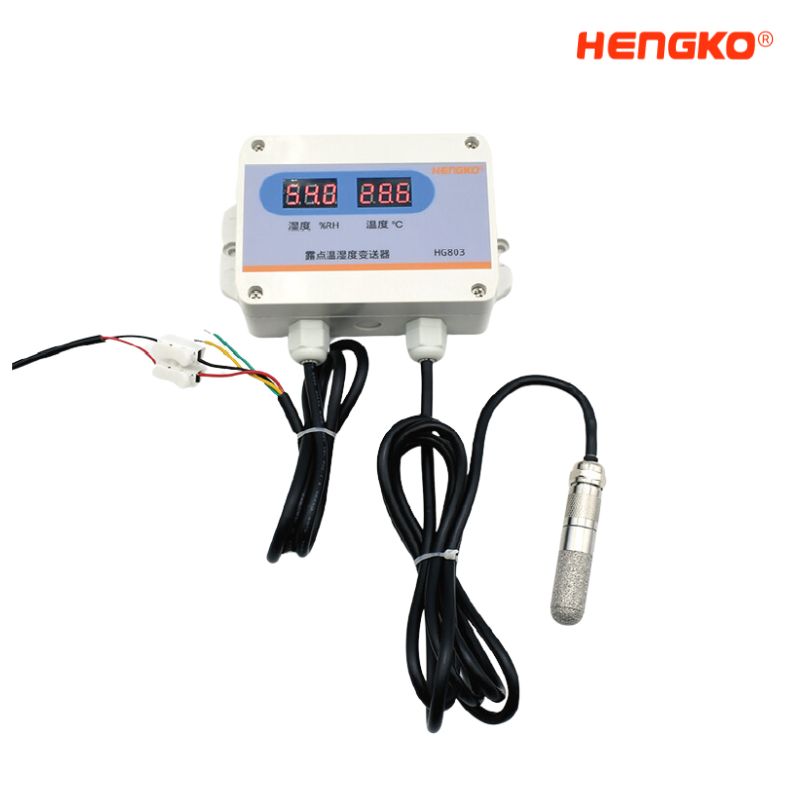
Industrial Temperature and Humidity Transmitter vs Normal Temperature and Humidity Sensor
Different Features of Industrial Temperature and Humidity Transmitter Than Normal Temperature and Humidity Sensor ?
Both industrial temperature and humidity transmitters and normal temperature and humidity sensors are designed to measure the same variables: temperature and humidity. However, they are built for different purposes and environments, leading to different feature sets. Here's a comparison highlighting the different features of industrial transmitters compared to normal sensors:
1. Durability and Robustness:
Industrial Transmitters: Designed to withstand harsh industrial conditions such as extreme temperatures, high humidity, corrosive atmospheres, and mechanical shocks.
Normal Sensors: Typically more suited for benign environments, such as homes or offices, and may not have the same level of ruggedness.
2. Communication and Integration:
Industrial Transmitters: Often include communication protocols like 4-20mA, Modbus, HART, etc., for integration into industrial control systems.
Normal Sensors: Might simply produce a basic analog or digital output with limited or no networking capabilities.
3. Calibration & Accuracy:
Industrial Transmitters: Come with high precision and are often calibratable to maintain their accuracy over time. They might have onboard self-calibration or diagnostics.
Normal Sensors: Might have lower accuracy and not always come with calibration features.
4. Display and Interface:
Industrial Transmitters: Often feature integrated displays for real-time readings and may have buttons or interfaces for configuration.
Normal Sensors: May lack a display or have a simple one without configuration options.
5. Alarming and Notification:
Industrial Transmitters: Typically have built-in alarm systems that trigger when readings go beyond set thresholds.
Normal Sensors: Might not come with alarm functions.
6.Powering Options:
Industrial Transmitters: Can be powered through various means, including direct line power, batteries, or even power derived from control loops (like in a 4-20mA loop).
Normal Sensors: Typically battery-powered or powered by a simple DC source.
7.Enclosures and Protection:
Industrial Transmitters: Encased in protective housings, often with high IP ratings against dust and water ingress, and sometimes explosion-proof or intrinsically safe designs for hazardous areas.
Normal Sensors: Less likely to have high-grade protective enclosures.
8. Response Time and Sensitivity:
Industrial Transmitters: Designed for rapid response and high sensitivity, catering to dynamic industrial processes.
Normal Sensors: May have slower response times, adequate for non-critical applications.
9. Configurability:
Industrial Transmitters: Allow users to configure parameters, measurement units, alarm thresholds, etc.
Normal Sensors: Less likely to be configurable.
10 .Cost:
Industrial Transmitters: Typically more expensive due to the advanced features, durability, and precision they offer.
Normal Sensors: Generally more affordable but with limited features and capabilities.
So, while both industrial transmitters and normal sensors serve the fundamental purpose of measuring temperature and humidity, industrial transmitters are built for the complexities, rigors, and precision-demands of industrial applications, whereas normal sensors are designed for more straightforward and less demanding environments.
What Factors You Should Care When Choose Industrial Temperature and Humidity Transmitter ?
Most industrial temperature and humidity transmitters are combined with various hosts and monitoring platforms to form a temperature and humidity monitoring system, which is used in various industrial control industries. There are lots of temperature and humidity transmitters in the market, how can we select a suitable product, please take the following point the attention:
Measuring Range:
For humidity transducers, measuring range and accuracy are important things. The humidity measuring range is 0-100%RH for some Scientific research and meteorological measurement. According to the temperature and humidity of the measuring environment, the requirement humidity measuring range is different. For the Tobacco industry, drying boxes, environmental test boxes, and other high-temperature environments need high temperature and humidity transmitters to monitor the temperature and humidity. There are lots of industrial high temperature and humidity transmitters that can operate under the 200℃, it has the advantage of Wide temperature range, Chemical pollution resistance, and long-term stability.
Not only do we need to pay attention to the high-temperature environment but also the low-temperature environment. If it is generally below 0°C in winter in the north, if the transmitter is measured outdoors, it is best to choose a product that can resist lower temperatures, anti-condensation, and anti-condensation. HENGKO HT406 and HT407 are no condensation models, the measuring range is -40-200℃. Suitable for Snowy outdoor in winter.
Accuracy:
The higher the accuracy of the transmitter, the higher the manufacturing cost and the higher the price. Some precision instrument industrial measurement environments have strict requirements on accuracy errors and ranges. HENGKO HK-J8A102/HK-J8A103 high precision industrial temperature and humidity meter have excellent performance in the 25℃@20%RH, 40%RH, 60%RH. CE/ROSH/FCC certificated.
Selecting on demand will never go wrong, but sometimes the transmitter is used soon or the measurement error is large. It is not necessarily a problem with the product itself. It may also be related to your usage habits and environment. For example, using temperature and humidity transmitters at different temperatures, Its indication value also considers the influence of temperature drift. We suggest calibrating the humidity temperature transmitter per year to avoid drifting.
Get in Touch with the Experts!
Have questions or need more information about our products and solutions?
Don't hesitate to reach out to HENGKO. Our team is ready to assist you with all your inquiries.
Email us at ka@hengko.com
Your success is our priority. Contact us today!
Post time: Nov-30-2021
